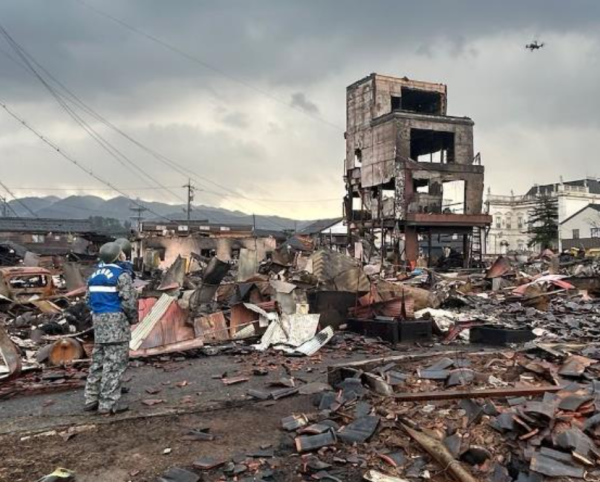Africa on alert for plague
The plague in Madagascar has sparked fears of a worldwide pandemic like the Spanish Influenza of 1918 which killed tens of millions. A Centers for Disease Control staff microbiologist analyzes a vial of the 1918 flu virus.
November 7, 2017
In the last three months, there has been an outbreak of pneumonic plague in Madagascar which has infected nearly two thousand and killed hundreds. This is a disturbing escalation in the spread of the disease and threatens the entire continent of Africa if aid groups and the World Health Organization are unable to curb its spread. In five days, the number of infected persons has increased by 40 percent. The Centers for Disease Control (CDC), which is headquartered in Atlanta, GA, has yet to issue travel warnings to Madagascar which has some medical professionals worried because if the disease spreads outside of Madagascar’s borders, the entire globe is at risk of a dangerous epidemic. Pneumonic Plague is considered more dangerous than other stains of the disease because it can be spread through the air. This means that coughing, sneezing, and spitting are possible methods of transmission. Although the disease is endemic to Madagascar, meaning that there are reported cases each year, these do not typically exceed 20 or 30 and the strain is hardly ever passed pneumatically. The existence of a “godzilla” el nino weather pattern this year is believed to have contributed to the rise of the disease and the increase in the number of cases.
Medical professionals are equally frightened that the nation’s annual celebration of Famadihana will bring more individuals into contact with the disease. In respect of tradition, bodies are exhumed from their burial plots and are worshipped by living family members and are wrapped in fresh cloth. It is not impossible that the interaction between the corpses and their descendants could spread the disease more quickly, especially those bodies that are decomposing or have only recently become deceased. Others have claimed that wildfires in the region have forced rats from the forests into the villages which can carry and transmit diseases to humans. This is the worst outbreak of plague in the last fifty years which worries scientists since the world is far more connected now than it was in the 1960’s. The last significant outbreak occurred in India in 1994 but infected far fewer patients.
The World Health Organization has reiterated its commitment to containing the spread and has even declared that some districts in Madagascar are no longer reporting cases. Scientists and doctors have questioned the validity of this data, however, since there is a possibility that some details have been miscommunicated. Others are critical of the WHO, and question whether they are sharing falsified information with the public in an attempt to reduce global panic if the situation is far more serious than they have let on. Africa remains a very impoverished and undeveloped continent and lacks the sanitary standards of Europe and North America. Disease spreads more quickly on the continent as was demonstrated during the Ebola outbreak in West Africa. That disease was particularly difficult to contain and one infected person managed to travel to the United States despite being screened. Ebola also spread rapidly, while this outbreak has occurred gradually. The speed at which a disease spreads is based upon the ‘r-naught’ which determines how many people an average individual will infect if they are contagious with the disease. An ‘r-naught’ of one is typical for the common cold while an ‘r-naught’ upwards of four is characteristic of a highly contagious virus that can paralyze a nation.
In a World Health Organization risk assessment, researchers stated that, “While the declining trend in new plague case reports and reduction in hospitalizations due to plague is encouraging, WHO expects more cases of plague to be reported from Madagascar until the typical plague season ends in April 2018.”
The World Health Organization has gone so far as to say that it “advises against any restriction on travel or trade on Madagascar based on the information available.” They report that the risk of plague spreading around the world is very low, but remind individuals that it takes just one ill person from Madagascar to infect another part of the globe.
Attention has quickly shifted to Uganda in East Africa where the Marburg virus has infected several people. According to the Guardian, “the Marburg virus is considered extremely dangerous and comes from the same family as Ebola, meaning it is a hemorrhagic fever that causes bleeding, fever, vomiting and diarrhoea.” Ebola killed approximately 11,000 in 2014, and medical professionals are concerned that the Marburg Virus could be the ‘next Ebola’ if it is not contained properly.










